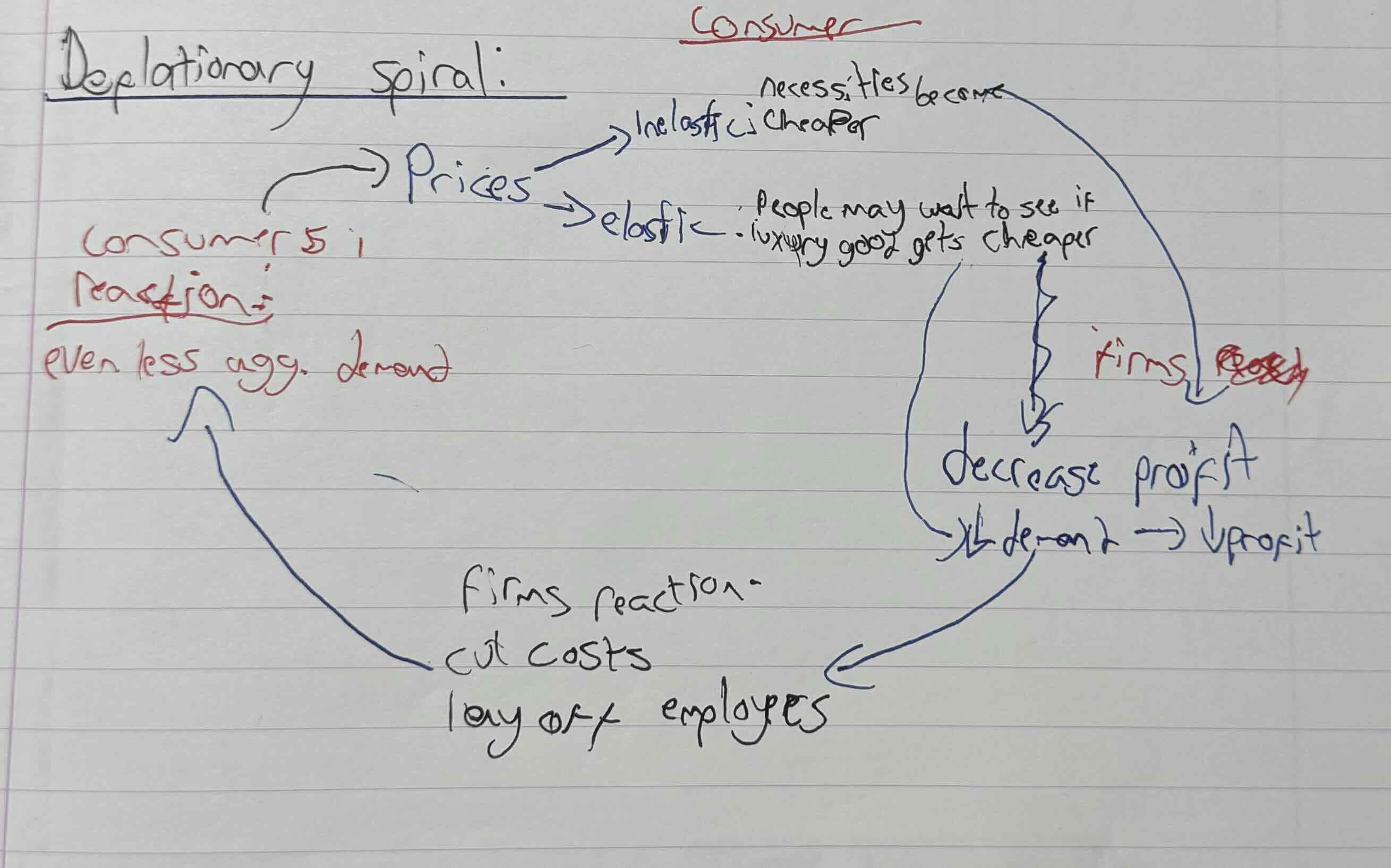Chapter 26: Inflation
What is inflation?
Inflation: general and continuing rise in prices measuered as a rate
Deflation: a fall in prices or economic slowdown
Aggregate demand: total demand in the economy from consumers, businesses, government and foreign buyers
How is it measured?
CPI (Consumer Price Index): a measure of the general price level
We use this to:
Compare average costs of months from previous years in the form of percentage change
Demand pull inflation
inflation caused by an increase in demand in the economy
Possible causes of increase in aggregate demand:
Rising consumer spending
encouraged by tax cuts or low interest rates
Sharp increases in government spending
RIsing demand for resources
Booming demand for exports
Cost pull inflation
Inflation is caused by rising business costs. Businesses put up prices to protect profit margins
Possible causes of rising business costs:
Rising business costs of imports
increase in wage
increase in taxation
Relationship between interest rates and inflation
Interest rates: Price paid to lenders for borrowed money
Monetarists: Economists who believe there is a strong link between growth in the money supply and inflation
money supply: the stock of notes and cost, bank deposits and other financial assets in the economy
Key concept: Monetarists believe that inflation may be caused when households, firms and the government borrow money from banks to fund extra spending
Adds to money supply because there are more bank deposits (increases bank balance)
Extra money lent creates more demand and prices go up
This type of inflation is likely to happen if interest rates are low
because borrowing is likely to occur if interest rates are low
How interest rates can be used to lower inflation
High interest rates reduce borrowing because the price of money increases
Money supply therefore rows less quickly
Demand will therefore fall (less disposable income)
pressure on prices is relieved
Inflation will fall
Deflationary spiral:

Impacts of Inflation:
Prices:
Prices Rise, which reduces the power of the money, meaning people can buy less goods and services with the same income
Wage
If prices rise, workers will want higher wages to compensate, and sometimes negotiate it successfully
However, higher wages mean higher production costs, so firms mat rise prices further, creating a wage/price spiral
Exports
When prices increase domestically, firms will find it harder to sell goods overseas (price of exports rise) → Demand for exports falls → balance of payments is affected negatively
Fall in demand for exports could lead to domestic job loss
Unemployment
Inflation causes an increase in aggregate demand → firms want to produce more since prices are rising (more revenue) → more workers are needed to produce these goods → reduction of unemployment
Tradeoff between inflation and unemployment
Menu costs
If inflation is rapid, firms increase their prices frequently
Increases menu costs (cost of changing price in “menu”)
Shoe leather costs
This is the (non-monetary) costs for individuals and businesses of shopping around more to look for the best prices,, time and other resources are wasted
Uncertainty
If inflation is high, firms will find it difficult to predict prices for the next few months/years, which makes business decision/investment making difficult
Difficult for businesses to establish long term contracts
Business & Consumer Confidence
Consumers might feel anxious about inflation → less willing to borrow money → more likely to save “just in case” (less spending → lower aggregate demand → potentially higher unemployment
Businesses may postpone growth plans or reduce spending
Hyperinflation: prices spiral off control
Consumers might “buy now” before increase in prices
Investment
Investment require less spending in large sums in hopes of future returns (earning that money back and more)
Uncertainty leads to low business confidence, meaning investment projects are likely to be cancelled → negative impact on economic growth & employment
 Knowt
Knowt
